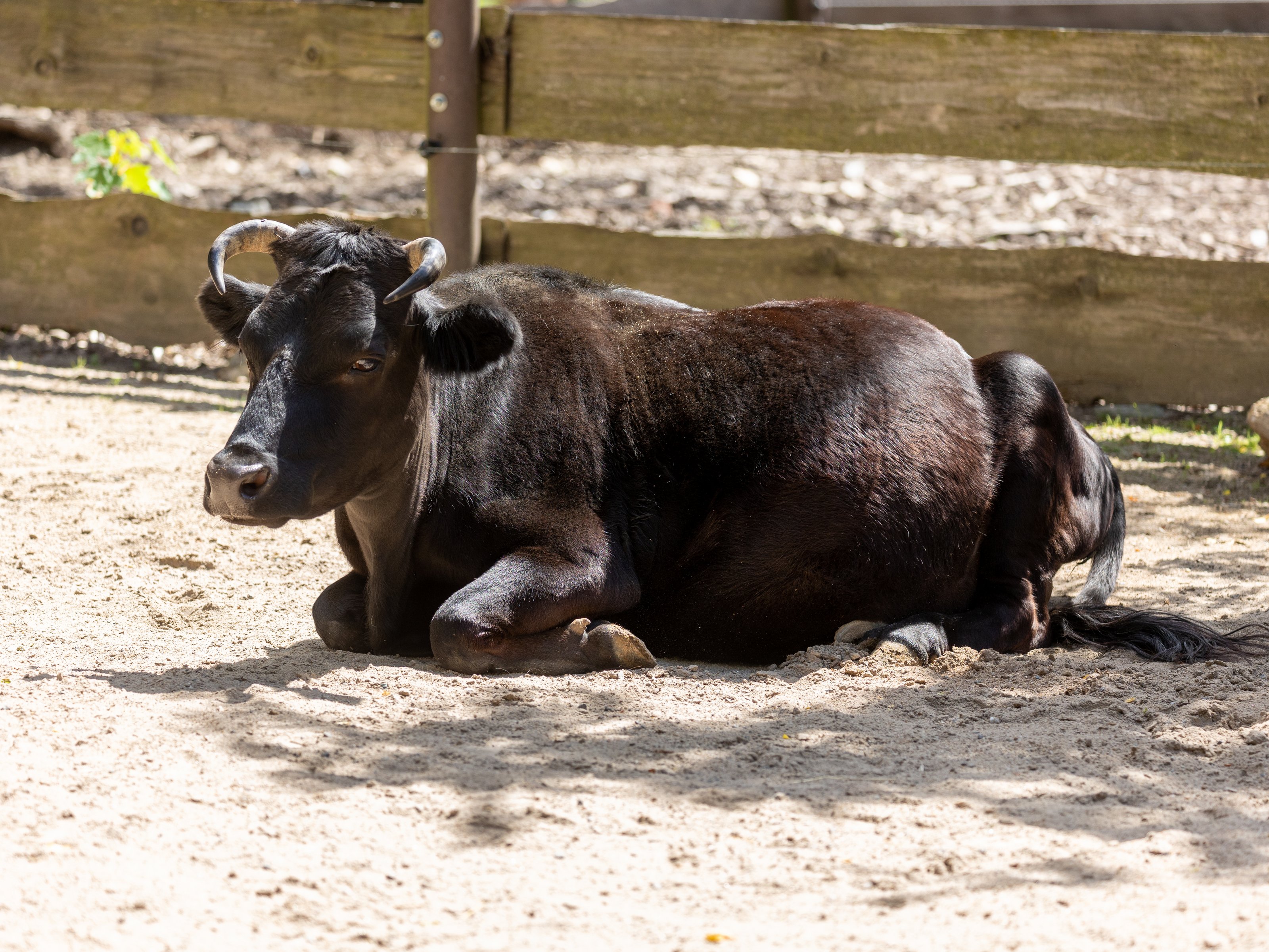
Station 10 Dahomey-Rind
Die Zwerge unter den Hausrindern. Nein, zur lukrativen Fleisch- und Milchgewinnung ist diese kleine Rinderrasse wirklich nicht geeignet. Ihre Fans haben sie aber trotzdem. Gehalten werden sie als Liebhaberei, Rasenmäher oder zur Landschaftspflege. Zudem sind sie pflegeleicht, kommen notfalls mit kärglichem Futterangebot aus und sind nicht so anfällig bei extremen Temperaturen.
Diese besonderen Zwergrinder mit der blauen Zunge kamen ca. um 1900 aus ihrem Herkunftsgebiet, dem damaligen Königreich Dahomey in Westafrika, nach Europa. Zuerst nur in Tierparks und Zoos gehalten, wurden sie später auch von den Privathaltern entdeckt und nachgezüchtet.
Die Jahrhunderte lange natürliche Selektion in den Trockensavannen Afrikas hat diese Kleinwüchsigkeit der Dahomeys entstehen lassen.
Station 10 Zakrslý skot dahomey
Trpaslíci mezi domácím skotem. Ne, toto malé plemeno skotu opravdu není vhodné pro lukrativní produkci masa a mléka. Ale stále mají své fanoušky. Chovají se jako zájmová zvířata, na spásání trávy nebo k údržbě krajiny. Kromě toho se o ně snadno pečuje, v případě potřeby si vystačí se skromným krmivem a nejsou tak náchylná na extrémní teploty.
Tento zvláštní zakrslý skot s modrým jazykem se do Evropy dostal kolem roku 1900 z oblasti svého původu, tehdejšího království Dahomey v západní Africe. Zpočátku byl chován pouze v zoologických zahradách a zvířecích parcích, později byl objeven a chován i soukromými chovateli.
Dahomejský skot je přirozeně malého vzrůstu kvůli staletím přirozeného výběru v suchých afrických savanách.
Station 10 Dahomey cattle
The dwarfs among domestic cattle. No, for lucrative meat and milk production, this small breed of cattle is really not appropriate. But they still have their fans. Kept as a hobby, lawn mower or for landscape maintenance. They are also easy to care for, can get by with meagre food if necessary, and are not as susceptible to extreme temperatures.
These special dwarf cattle with the blue tongue came to Europe around 1900 from their area of origin, the then Kingdom of Dahomey in West Africa. First kept only in zoos and animal parks, they were later discovered and bred by private owners.
Centuries of natural selection in the dry savannahs of Africa have given rise to this small stature of the Dahomeys.